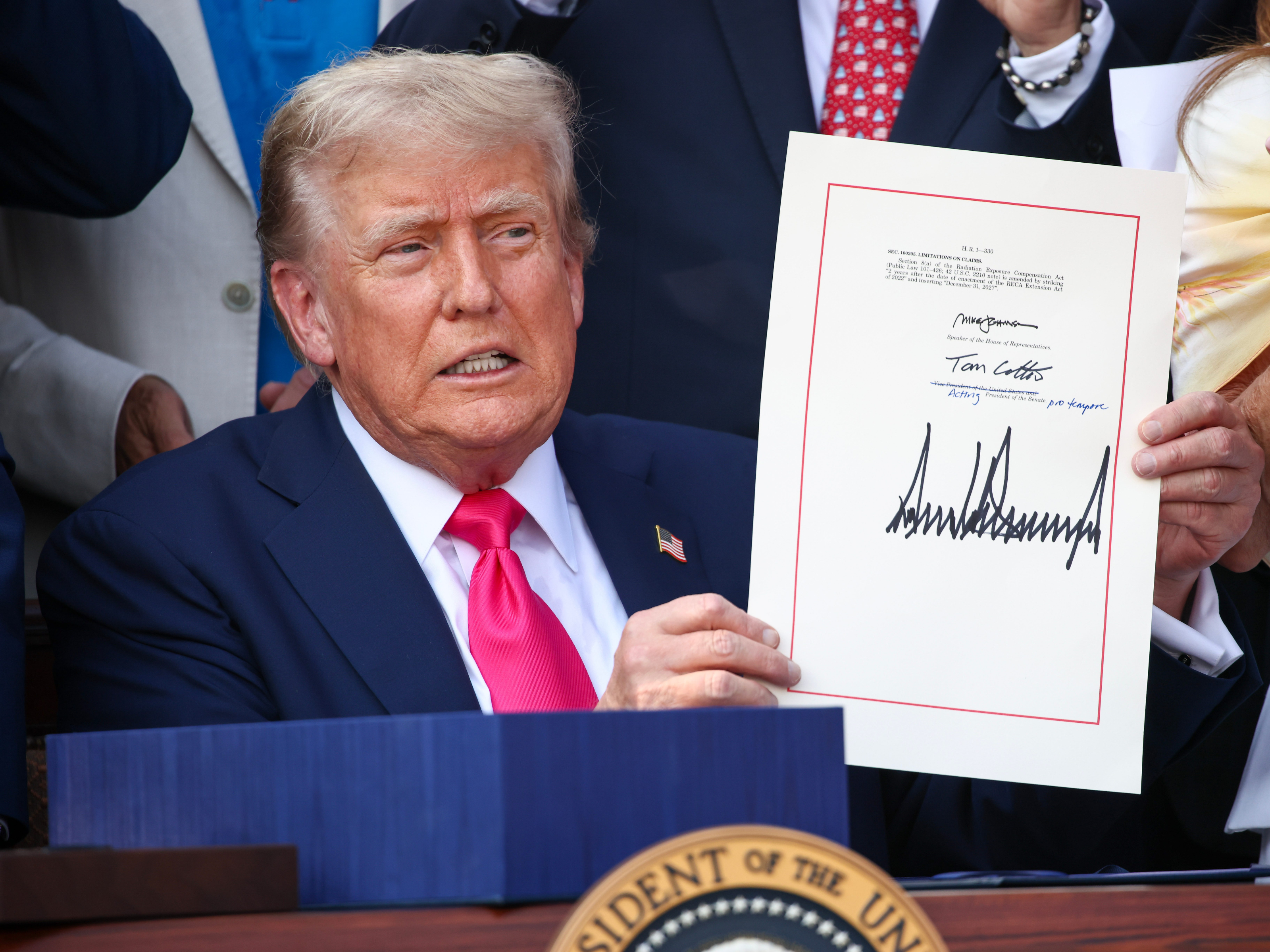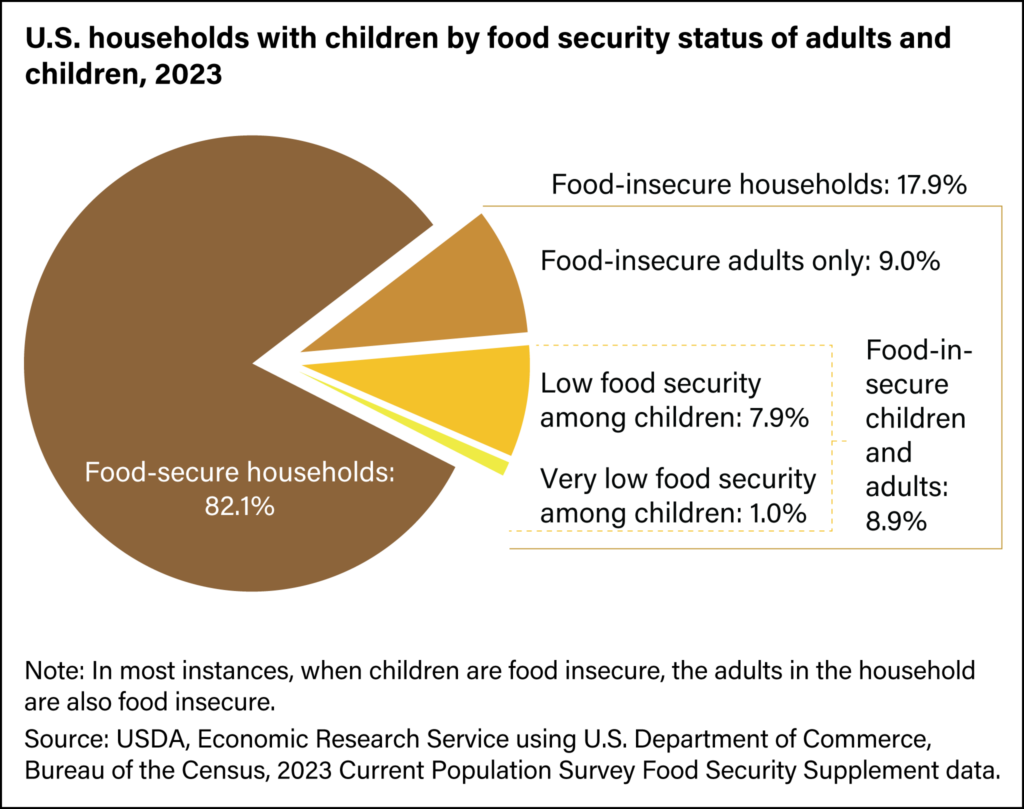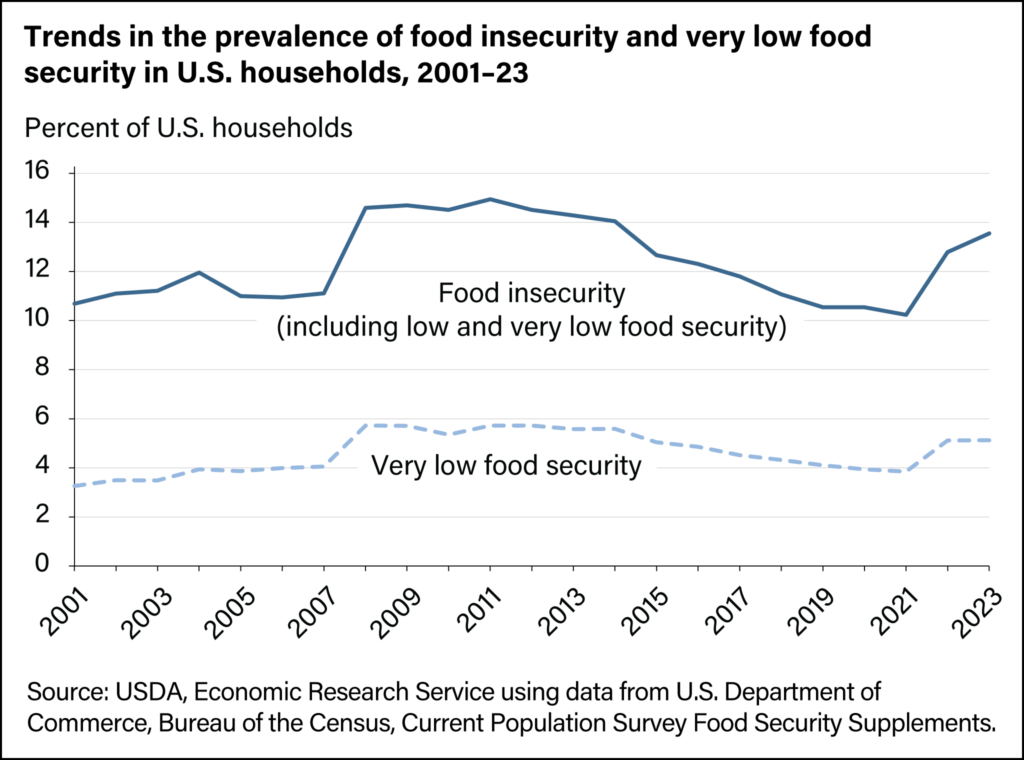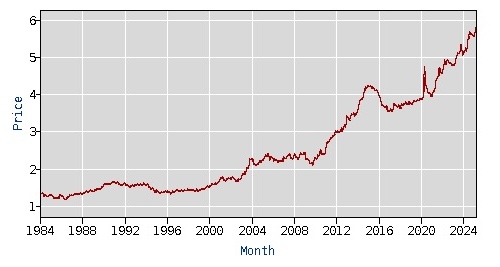
The US Department of Agriculture will stop conducting its annual food insecurity survey, in a bid to stave off criticism of the Trump administration’s aid cuts.
In 2023, over 47 million Americans in the US faced some sort of food insecurity, three million more than the previous year.
But amid federal cuts in nutritional aid and concerns about a further rise in hunger, the US Department of Agriculture has announced that it will stop conducting this survey, making the forthcoming 2024 report the last of its kind.
“These redundant, costly, politicised and extraneous studies do nothing more than fearmonger,” the USDA said. However, experts have raised concerns about the timing and implications of the decision, which was first reported by the Wall Street Journal.
The survey is the central tool for determining Americans’ ability to access food, and its removal will make it harder to analyse the true impact of President Donald Trump’s cuts to vital food assistance programmes amid rising inflation.
USDA slammed for explanation of decision to end food insecurity survey

The USDA’s household food security reports have been published every year since the mid-1990s, beginning under the Clinton administration as a means to support the increase of eligibility for the Supplemental Nutrition Assistance Program (SNAP) and benefit allotments.
The latest report designated 11.2 million households as having low food security in 2023, meaning they obtained enough food to avoid disrupting their diets or reducing consumption by eating less varied diets, receiving food stamps, or going to food banks. This was higher than the 10.2 million figure from 2022.
Meanwhile, 6.8 million households (5% of the total, representing 12.2 million adults) were adjudged to have very low food security. It meant that their normal eating patterns were disrupted and food intake was reduced at times due to a lack of sufficient income or other resources for food.
Overall, 7.2 million children lived in food-insecure households, while nearly 850,000 (or 1.2% of the total child population) lived in homes with very low food security.
The nationwide survey is widely used by federal, state and local lawmakers to make funding decisions for food assistance initiatives and evaluate how well they work.
But the USDA attacked the study’s findings as “subjective, liberal fodder”, calling them “rife with inaccuracies, wrong metrics, zero accountability, and a massive drive for bigger and larger government programmes”.
“Trends in the prevalence of food insecurity have remained virtually unchanged, regardless of an over 87% increase in SNAP spending between 2019-23,” the department said.
In response, Elaine Waxman, a food insecurity measurement expert at think tank the Urban Institute, told the New York Times: “In no way does that reflect the view of anybody who works with the data. That is completely a pretext for eliminating data that can point out problems.”
Climate change and federal aid cuts drive up food insecurity

SNAP, formerly the Food Stamp Program, is a federal nutritional initiative for low-income families. It supplements the grocery budgets of food-insecure households, so they can afford nutritious food that’s essential to health and wellbeing.
Around 12% of the population, or 41.7 million Americans, benefit from the programme, which has been credited by researchers as being “successful in reducing food insecurity”. And with hunger sharply increasing after years of gradual decline – thanks to inflation and the end of pandemic aid initiatives – food stamps are becoming more significant than ever.
Food banks have continued to witness more visits nationwide, with reports suggesting that this is the case even as immigrants are staying away out of concerns that their information could be shared or the Immigration and Customs Enforcement (ICE) may detain them.
Climate change has pushed grocery prices to unprecedented highs, with some commodities – like beef and eggs – recording never-before-seen prices. However, the Trump administration has erased any mentions of climate change from the USDA website, a new low for climate denial, while shutting the scientific research arm of the Environmental Protection Agency.

Meanwhile, the Republican government’s controversial budget bill, passed in July, has cut SNAP funding by around 20%, totalling $187B through to 2034, the largest reductions in the programme’s history. This is estimated to affect four million Americans (or 10% of those enrolled in the initiative), who will lose some or all of the aid.
The move has been heavily criticised, and experts argue that the scrapping of the food insecurity survey is a way to deflect from scrutiny.
Speaking to the Wall Street Journal, Lindsey Smith Taillie, nutrition professor at the University of North Carolina Gillings, said: “I think the only reason why you wouldn’t measure it is if you were planning to cut food assistance, because it basically allows you to pretend like we don’t have this food insecurity problem.”
Colleen Heflin, a professor at Syracuse University who has been studying the data since its inception, added: “Not having this measure for 2025 is particularly troubling, given the current rise in inflation and deterioration of labour market conditions, two conditions known to increase food insecurity.”
The post As Hunger Rises, Trump Ends Annual Report on US Food Insecurity appeared first on Green Queen.
This post was originally published on Green Queen.